

Old Kingdom, Dynasty IV; c. 2520-2494 BCE
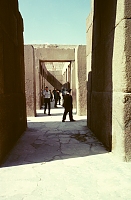
|
This valley temple was part of the funerary complex including along with the pyramid (with its burial chamber) a mortuary temple (joining the pyramid on its east side), and a covered causeway leading to the valley temple. The purpose of these valley temples has been debated: they could have been used for the mummification process or perhaps for the "opening of the mouth" ceremony, when the "ka" entered the deceased person's body. This temple is an excellent state of preservation, having been buried by desert sand until the 19th century. | |
| The main hall of the temple is in a "T" shape. Huge blocks of pink Aswan granite are joined with precision to form piers surmounted by a massive architrave. The floor is made of alabaster. | 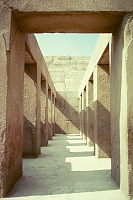
|

|
| The symmetrical rooms on either side of the central hall originally contained 23 statues of Khafre. They would have been lit mysteriously. Covered with a ceiling (now gone), they would have admitted light through narrow slits in the roof. (See center image below.) | ||
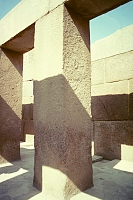
|
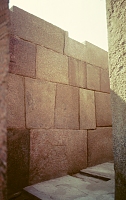
|
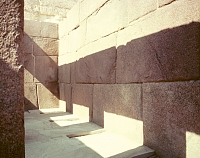
|
| Indentations in the alabaster floor indicate that the 23 statues of Khafre were once placed against the wall. It was thought that these permanent statues, made of diorite, would provide a place of the "ka" should the mummy be destroyed. Only one of these statues has been found. (See additional images of this sculpture in the Cairo Museum.) | ||

|
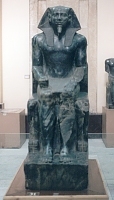
|
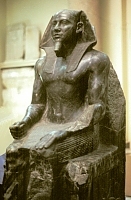
|

|
The long exit passage |
|
 Click here to go to the Egypt Index.
Click here to go to the Egypt Index.
 Click here to return to index of art historical sites.
Click here to return to index of art historical sites.
 Click here to return to index of artists and architects.
Click here to return to index of artists and architects.
 Click here to return to chronological index.
Click here to return to chronological index.
